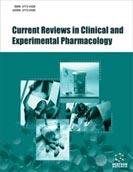Abstract
Bacillus clausii is a commercial spore probiotic known to treat multiple diseases. An increased interest in exploring the nutraceutical and probiotic properties of various microorganisms has made researchers explore more about these bacteria. The current trends in the healthcare industry are majorly focused on devising new therapies to avoid drug and pathogen resistance in patients. Antimicrobial peptides have been considered a source of antibiotics for a long time. Still, getting new therapies into the market is a big challenge. Members of the genus Bacillus have been reported to have a broad spectrum of antimicrobial peptides. One of the least explored species under this genus is Bacillus clausii, concerning peptide drug therapy. The applications of Bacillus clausii in treating or preventing gut dysbiosis and respiratory infections have been largely supported in the past two decades. Yet research is lacking in explaining the pathways at molecular levels in targeting pathogens. In this mini-review, we are going to summarise the research that has been reported so far about peptide extraction from Bacillus clausii, their mode of action and advantages to mankind, and the challenges lying in the isolation of peptides.
Graphical Abstract
[http://dx.doi.org/10.1139/cjm-2014-0613] [PMID: 25629960]
[http://dx.doi.org/10.1152/physrev.00018.2018] [PMID: 31460832]
[http://dx.doi.org/10.3389/fcimb.2021.625210] [PMID: 33937093]
[http://dx.doi.org/10.3390/microorganisms11071685] [PMID: 37512858]
[http://dx.doi.org/10.2174/2212707002666150128195631]
[http://dx.doi.org/10.1007/s12602-019-09540-x] [PMID: 30879230]
[http://dx.doi.org/10.1111/j.1365-2672.2004.02464.x] [PMID: 15659203]
[http://dx.doi.org/10.1128/mBio.00802-18] [PMID: 30301848]
[http://dx.doi.org/10.3390/antibiotics3040572] [PMID: 27025757]
[http://dx.doi.org/10.1016/j.mib.2022.01.006] [PMID: 35121284]
[http://dx.doi.org/10.1038/s41564-018-0337-x] [PMID: 30718848]
[http://dx.doi.org/10.1080/17474124.2016.1200465]
[http://dx.doi.org/10.1111/j.1472-765X.2007.02212.x] [PMID: 17897389]
[http://dx.doi.org/10.3390/microorganisms10061246] [PMID: 35744764]
[http://dx.doi.org/10.3389/fmicb.2020.01010] [PMID: 32733389]
[http://dx.doi.org/10.1007/s13205-023-03662-4]
[http://dx.doi.org/10.3389/fmedt.2020.610997] [PMID: 35047892]
[http://dx.doi.org/10.1002/0471140864.psa03fs13] [PMID: 18429073]
[http://dx.doi.org/10.1111/j.1745-7270.2007.00320.x] [PMID: 17687489]
[http://dx.doi.org/10.1146/annurev.micro.52.1.41] [PMID: 9891793]
[http://dx.doi.org/10.1177/1082013217724705] [PMID: 28816527]
[http://dx.doi.org/10.1016/j.lwt.2020.110685]
[http://dx.doi.org/10.1111/jam.15060]
[PMID: 29910850]
[http://dx.doi.org/10.1007/s12010-013-0489-3] [PMID: 24037515]
[http://dx.doi.org/10.36721/PJPS.2020.33.1.REG.135-139.1] [PMID: 32122841]
[http://dx.doi.org/10.1038/s41598-020-69533-7] [PMID: 32724066]
[http://dx.doi.org/10.1016/j.bpj.2009.06.029]
[http://dx.doi.org/10.1128/AAC.02815-15] [PMID: 27001810]
[http://dx.doi.org/10.3109/07388551.2016.1163324] [PMID: 27098391]
[http://dx.doi.org/10.3390/microorganisms11020240] [PMID: 36838205]
[http://dx.doi.org/10.1186/s12864-016-3224-y] [PMID: 27821051]
[http://dx.doi.org/10.1021/pr400433h] [PMID: 23937099]
[http://dx.doi.org/10.2119/molmed.2008.00087]
[http://dx.doi.org/10.3389/fmicb.2015.01363] [PMID: 26640466]
[http://dx.doi.org/10.1021/cb1001558] [PMID: 20698568]
[http://dx.doi.org/10.1016/j.febslet.2005.06.085] [PMID: 16083883]
[http://dx.doi.org/10.1042/BJ20110106] [PMID: 21615333]
[http://dx.doi.org/10.1016/j.bbamem.2014.11.001] [PMID: 25445678]
[http://dx.doi.org/10.3109/08830180903215613] [PMID: 19954356]
[http://dx.doi.org/10.1021/acs.chemrev.6b00591] [PMID: 28135077]
[http://dx.doi.org/10.1002/psc.1319] [PMID: 21480436]
[http://dx.doi.org/10.1016/j.colsurfb.2017.02.003] [PMID: 28236791]
[http://dx.doi.org/10.1039/a804532a]
[http://dx.doi.org/10.1186/s12866-022-02631-w]
[http://dx.doi.org/10.4161/gmic.1.1.11036]
[http://dx.doi.org/10.1186/s40794-022-00166-6] [PMID: 35397572]
[http://dx.doi.org/10.3390/nu15010054] [PMID: 36615713]
[http://dx.doi.org/10.3389/fmicb.2017.01490] [PMID: 28848511]
[http://dx.doi.org/10.1007/s12011-022-03215-5] [PMID: 35349007]
[http://dx.doi.org/10.36899/JAPS.2023.1.0603]
[http://dx.doi.org/10.1016/j.btre.2020.e00575] [PMID: 33659192]
[http://dx.doi.org/10.3390/polym14235225] [PMID: 36501619]
[http://dx.doi.org/10.3390/pr8070849]
[http://dx.doi.org/10.5812/jjm-129848]
[http://dx.doi.org/10.1186/s12934-018-0973-0]
[http://dx.doi.org/10.3390/bacteria2040014]
[http://dx.doi.org/10.3389/fmicb.2019.01794] [PMID: 31440222]
[http://dx.doi.org/10.2147/tcrm.2007.3.1.13] [PMID: 18360611]
[http://dx.doi.org/10.1080/00986445.2011.552024]
[http://dx.doi.org/10.1128/AEM.67.2.834-839.2001]




























